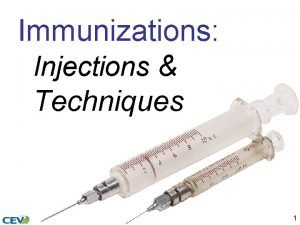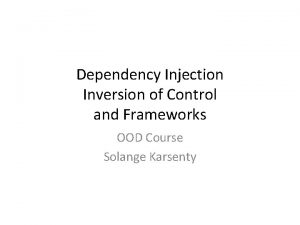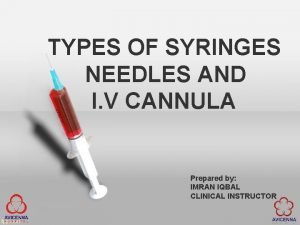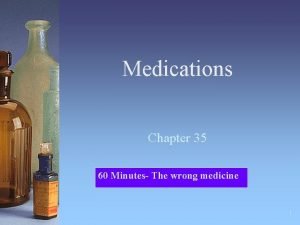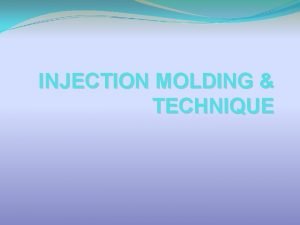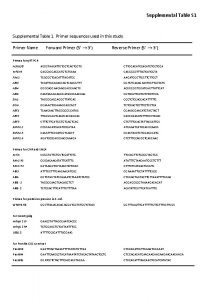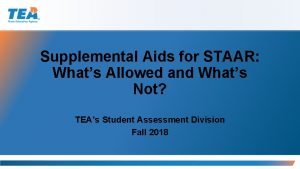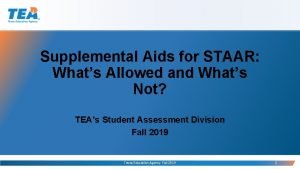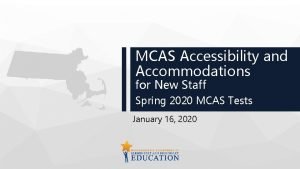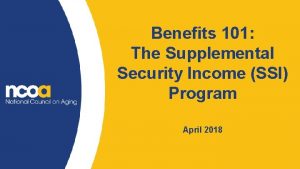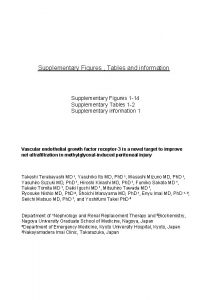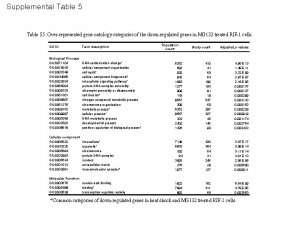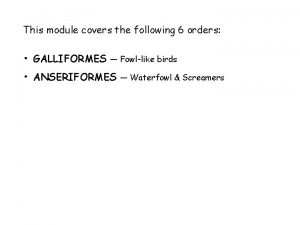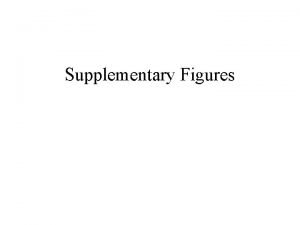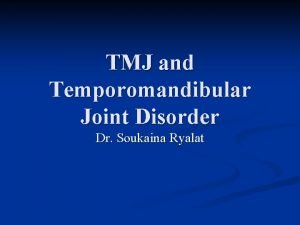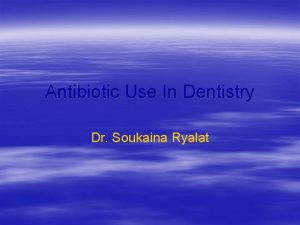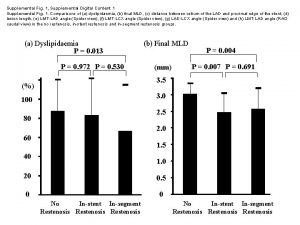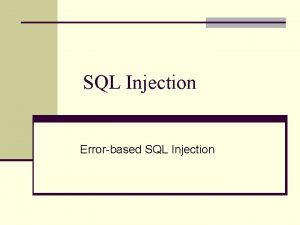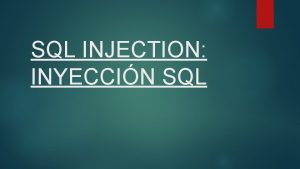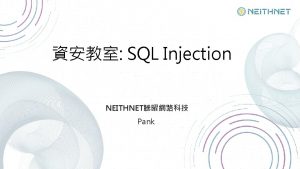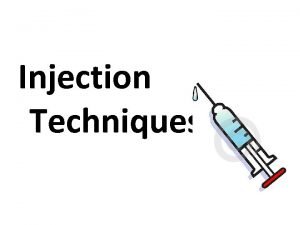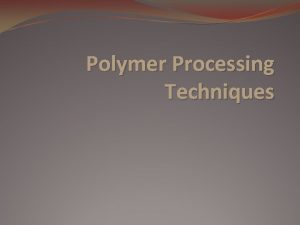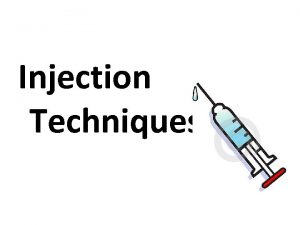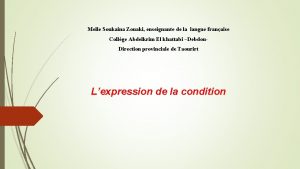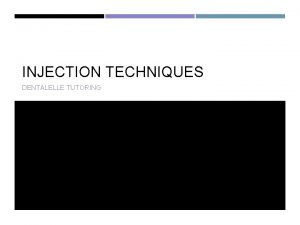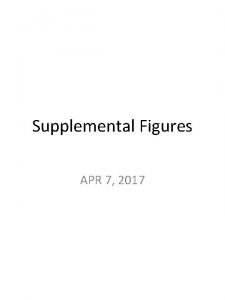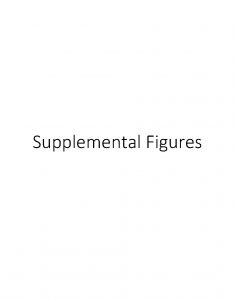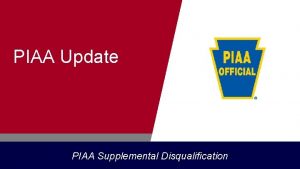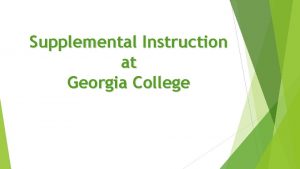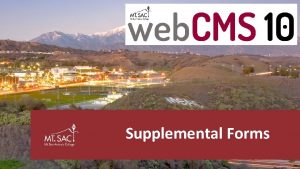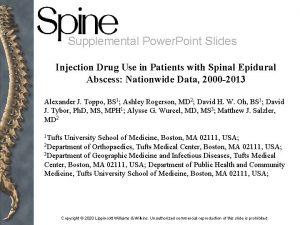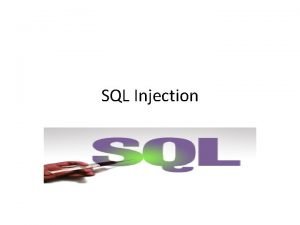Supplemental injection techniques Dr Soukaina Ryalat Main types


























- Slides: 26

Supplemental injection techniques Dr. Soukaina Ryalat

Main types PDL injection • Intraosseous • Intraligamental • Intra pulpal •

Development of Instruments

PDL injection Localized anesthesia • 74% of patients prefer PDL over the • inferior alveolar anesthesia No soft tissue anesthesia ( tongue , lip are • spared)

Indications of PDL Treatment of isolated teeth. • In pediatric treatment • When I. D block is contra indicated • (Hemophilics) Diagnosis of mandibular pain • To avoid bilateral I. D block anesthesia •

Contraindication Presence of infection • Concerns about enamel hypoplasia • Soft tissue damage, crestal bone • resorption, safety of periodontium? ?

Equipments Extra short needle is required (30 or 27 • gauge) Special needle? ? •

Periodontal ligament injection Technique: • A 27 -gauge short needle. 1 Area of insertion: long axis of the tooth to be treated on. 2 its mesial or distal of the root, or on the mesial and distal roots interproximally Target area: depth of the gingival sulcus. 3 Two important items indicate the success of the. 4 injection: Significant resistance to the deposition of the solution. a Blanching of the soft tissues adjacent to the injection. b site




Intraseptal injection

Intraseptal Injection Indications: • When both pain control and hemostasis are required for soft tissue and osseous periodontal treatment Contraindications: • Infection at the injection site Areas anesthetized: • Bone, soft tissue and root structure at the injection area

Intraseptal Injection Technique: • A 27 -gauge short needle. 1 Area of insertion: center of the interdental. 2 papilla adjacent to the tooth to be treated Two important items indicate the success of. 3 the injection Significant resistance during injection. a Blanching of soft tissues adjacent to the. b injection site


Intraosseous Injection Indication: pain control for dental • treatment of single or multiple teeth in a quadrant Areas anesthetized: • Bone, soft tissue and root structure at the injection area

Intraosseous Injection Technique: • Site of injection: at a point 2 mm apical to the intersection of lines drawn horizontally along the gingival margins of the teeth and a vertical line through the interdental papilla The site should be distal to the tooth to be treated



Intra pulpal Anesthesia

Additional maxillary techniques Anterior middle superior alveolar nerve • block Palatal approach – Anterior superior • alveolar nerve block

AMSA- Nerve Block Developed 1 n 1997 by Friedman and Hochman Area of Anesthesia; ASA nerve MSA nerve Subneural dental nerve plexus • • •

Contraindications Patients with thin palatal mucosa • Patients who cant tolerate 3 -4 m • administration time. Procedures requiring more than 90 • minutes.

PA-ASA nerve block Nerves Anesthetised: • Nasopalatine • Anterior branches of ASA nerve •

Maxillary nerve block High tuberosity approach • Greater palatine canal approach •

Thank you Good luck •
 Raouf oufkir
Raouf oufkir Injection techniques - vocabulary
Injection techniques - vocabulary Types of injection
Types of injection Dependency injection types
Dependency injection types Types of cannula
Types of cannula Types of injection
Types of injection Dorsal gluteal im injection
Dorsal gluteal im injection Z puller pin design
Z puller pin design Supplemental tables
Supplemental tables Alter table add supplemental log data
Alter table add supplemental log data Tea blank graphic organizers
Tea blank graphic organizers Tea approved multiplication chart
Tea approved multiplication chart Supplemental aids examples
Supplemental aids examples Supplemental online coursework
Supplemental online coursework Mcas accommodations manual 2020
Mcas accommodations manual 2020 What is ssi
What is ssi Ucla nursing prerequisites
Ucla nursing prerequisites Nursing program ubc
Nursing program ubc Supplemental figures
Supplemental figures Supplemental table
Supplemental table Supplemental table
Supplemental table Galliform with supplemental molt
Galliform with supplemental molt Supplemental figures
Supplemental figures Supplemental instruction
Supplemental instruction Supplemental instruction
Supplemental instruction Iowa state vet school supplemental application
Iowa state vet school supplemental application Supplemental instruction
Supplemental instruction

